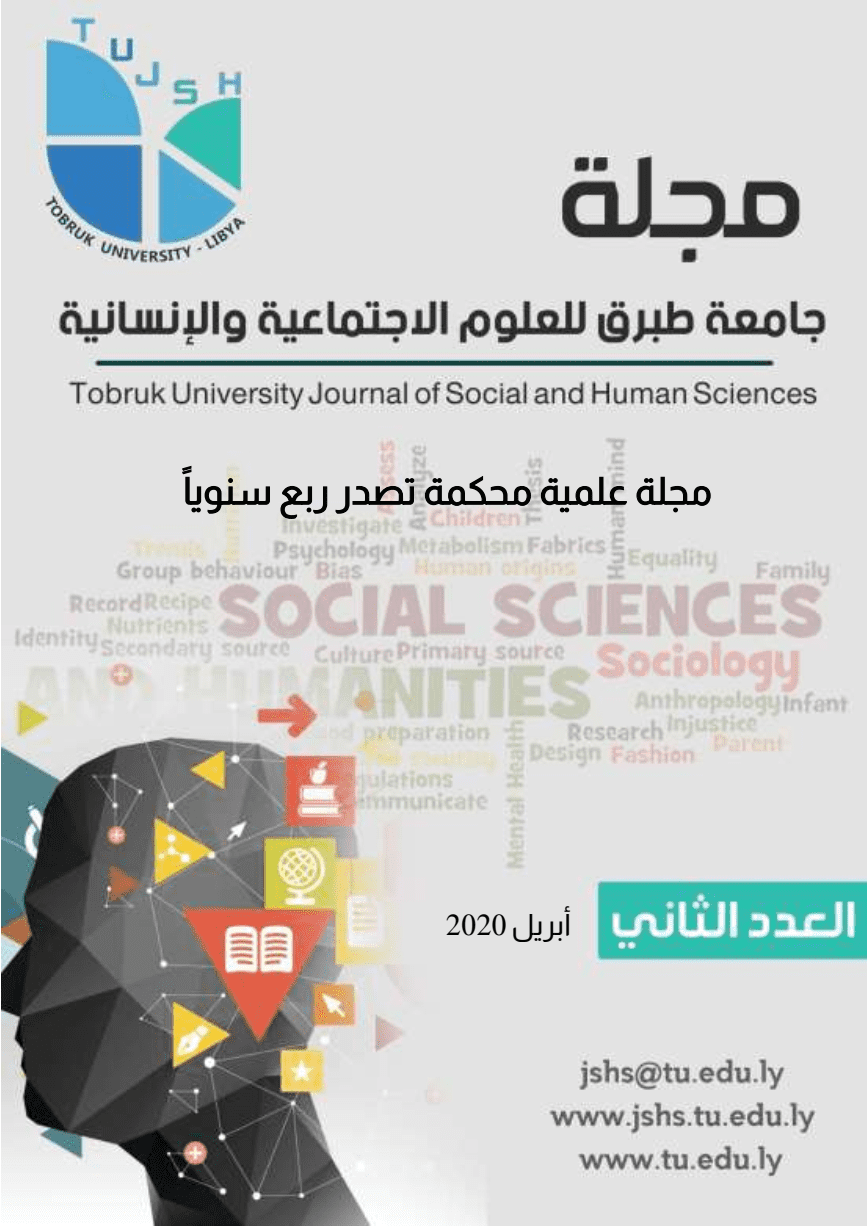Attitudes of science faculty members at the College of Education in Misrata towards using open educational resources in university education
DOI:
https://doi.org/10.64516/2cg63177Keywords:
College of Education, Open Educational Resources, University EducationAbstract
In light of the increasing and rapid development in education patterns enhanced by information and communications technology, and the need to strengthen the education sector and develop human resources to reach the knowledge economy. Open educational resources are one of the important means that facilitate access to knowledge, create opportunities for learning and teaching in a collaborative and participatory manner with the world, and open the door for everyone to create and innovate.Increasing awareness about the importance of open educational resources in terms of their production, reuse and redistribution according to high-quality standards, and promoting open educational practices to improve the quality of education and its outcomes so that the teacher and learner can employ these resources in educational contexts that enhance twenty-first century skills and contribute to the professional development of human resources. This course comesAs part of the efforts made by UNESCO in the Arab region to develop the education sector in general, and to encourage the production and use of Arab open educational resources in learning and teaching. Despite the calls and efforts made by countries and conferences and their interest in activating the inclusion of technology in general in education, it can be said that the success of its use in education to a large extent has not yet been completed, and it dependsThis depends on the extent to which computerized educational programs are mastered and designed, and linked to teaching strategies and educational plans to achieve educational goalsIn order for educational objectives to be achieved, it must take into account teachers’ attitudes and beliefs towards open educational resources, the extent of their belief in the feasibility of using them in education, and teachers’ skills in using computers, because of their impact on their practices in the classroom. Attitudes and beliefs are the best indicators of individuals’ decisions, and they are highly predictive factors for their behavior. Attitudes are also based on a cognitive outcome.The social context is one of its most important sources. This knowledge is considered a property; Therefore, knowing teachers’ beliefs and attitudes towards technology, revealing their beliefs that hinder the effectiveness of teaching, working to change them, overcoming them, and providing appropriate guidance by integrating open educational resources
Downloads
References
1 – يونسكو. (2012). إعلان باريس لعام 2102 بشأن الموارد التعليمية المفتوحة، المؤتمر العالمي للموارد التعليمية المفتوحة الذي عقد في اليونسكو بباريس خلال الفترة الممتدة من 20 إلى22حزيران/يونيو2
2 - زيتون، عايش، 1996 ،أساليب تدريس العلوم، عمان، دار الشروق للنشر والتوزيع .
3 – الريماوي، صوفيا و خولة صبري،2011، الاتجاهات نحو الحاسوب ومعوقات استخدامه في التعليم لدى معلمي العلوم في المدارس الحكومية في الضفة الغربية، مجلة دراسات العلوم التربوية جامعة القدس، العدد(1) مجلد 38 .
4 - أبو جلالة، صبحي، 1999 ،استراتيجيات حديثة في طرائق تدريس العلوم، الكويت، مكتبة الفلاح للنشر والتوزيع.
5- الغرام ،عماد ،2017 ،اتجاهات المعلمين نحو استخدام استراتيجيات التدريس الحديثة في محافظة اربد ،مجلة جامعة القدس المفتوحة ،مجلد (6)عدد(20).
6- وانشق القمر، 2005 ، لماذا فشلت الدراسات البحثية في أن تعطي تقديما شاملا للتكنولوجيا في عملية التعلم. متوفر على الموقعhttp:// almdares. net/ modules. php? Name= News:and file= article and sid = 115
7- عوض ،منير وموسى حلس،2015 ،الاتجاه نحو تكنولوجيا التعلم عن بعد وعلاقته ببعض المتغيرات لدى طلبة الدراسات العليا في الجامعات الفلسطينية ،مجلة جامعة الأقصى( العلوم الإنسانية)، مجلد(19)عدد(1). DOI: https://doi.org/10.12816/0018017
8- عكة، محمد و جميل إطميزي،2015، اتجاهات أعضاء الهيئة التدريسية نحو استخدام الموارد التعليمية المفتوحة في التعليم الجامعي بجامعة فلسطين الأهلية، مجلةCybrarians Journal.- العدد( 37). DOI: https://doi.org/10.12816/0013115
9- دراسة آمال عمراني ،2012، اتجاهات المعلمين نحو استخدام الحاسوب كوسيلة تعليمية في المدارس بالجزائر، رسالة ماجستير غير منشورة ،جامعة د. مولاي الطاهر سعيدة ، الجزائر.
10- اطميزي ،أحمد ،2008، دمج التعلم الالكتروني في الجامعات الفلسطينية: متطلباته وكيفيته وفوائده، مجلة العلوم الإنسانية، السنة السادسة ،العدد(38).
11- ملحم، عصام ،2011، مصادر المعلومات الإلكترونية في المكتبات الجامعية. جامعة نايف العربية للعلوم الأمنية - مركز البحوث والدراسات. ردمك: 9786038006656.
12 -OECD: Organization for Economic Co-Operation and Development. (2007). Giving Knowledge for Free: the Emergence of Open Educational Resources. Center for Educational Research and Innovation. Retrieved 10 April 2014, www.oecd.org/edu/ceri/38654317.pdf
Downloads
Published
Issue
Section
License
Copyright (c) 2020 أ. امنة رمضان ابوشعالة ، أ. امنة سليمان ساسي (Author)

This work is licensed under a Creative Commons Attribution 4.0 International License.








